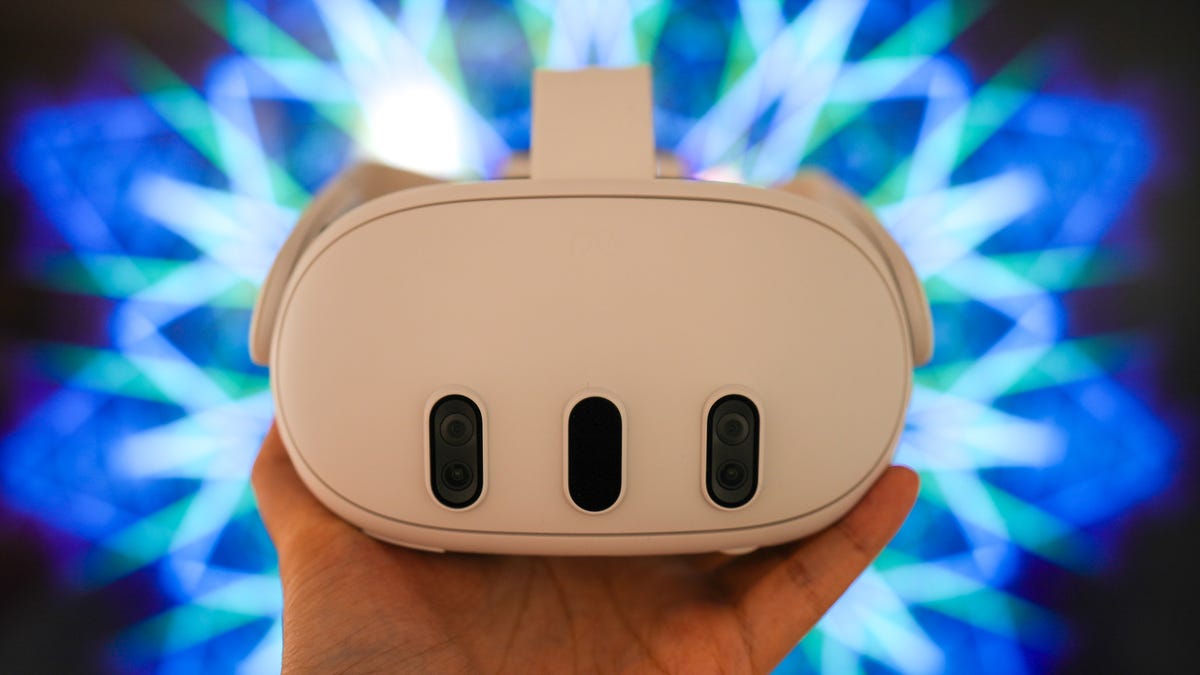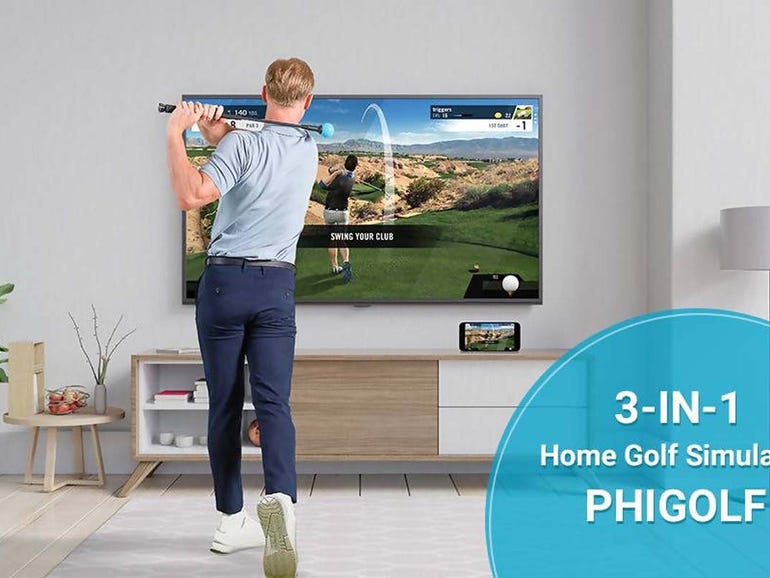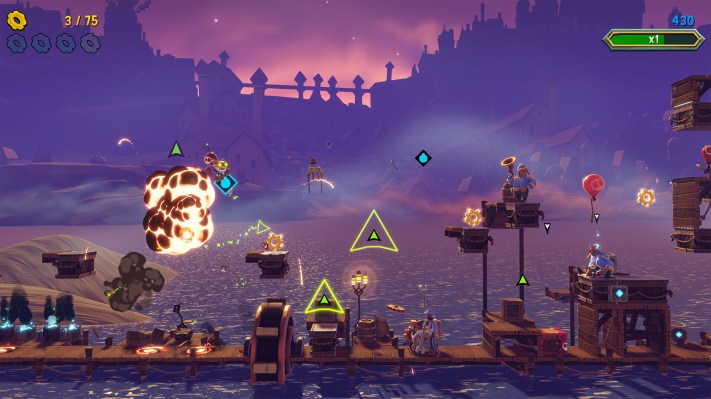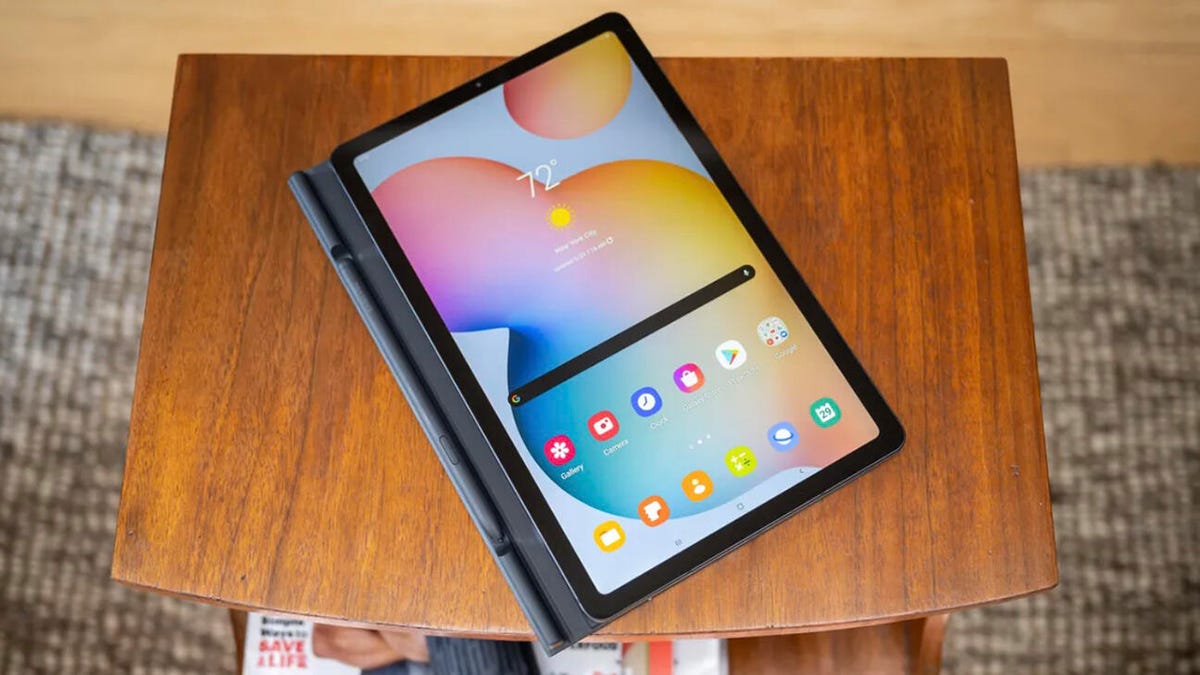Meta’s $500 Quest 3 is the mainstream VR headset I’ve been waiting for, and it delivers
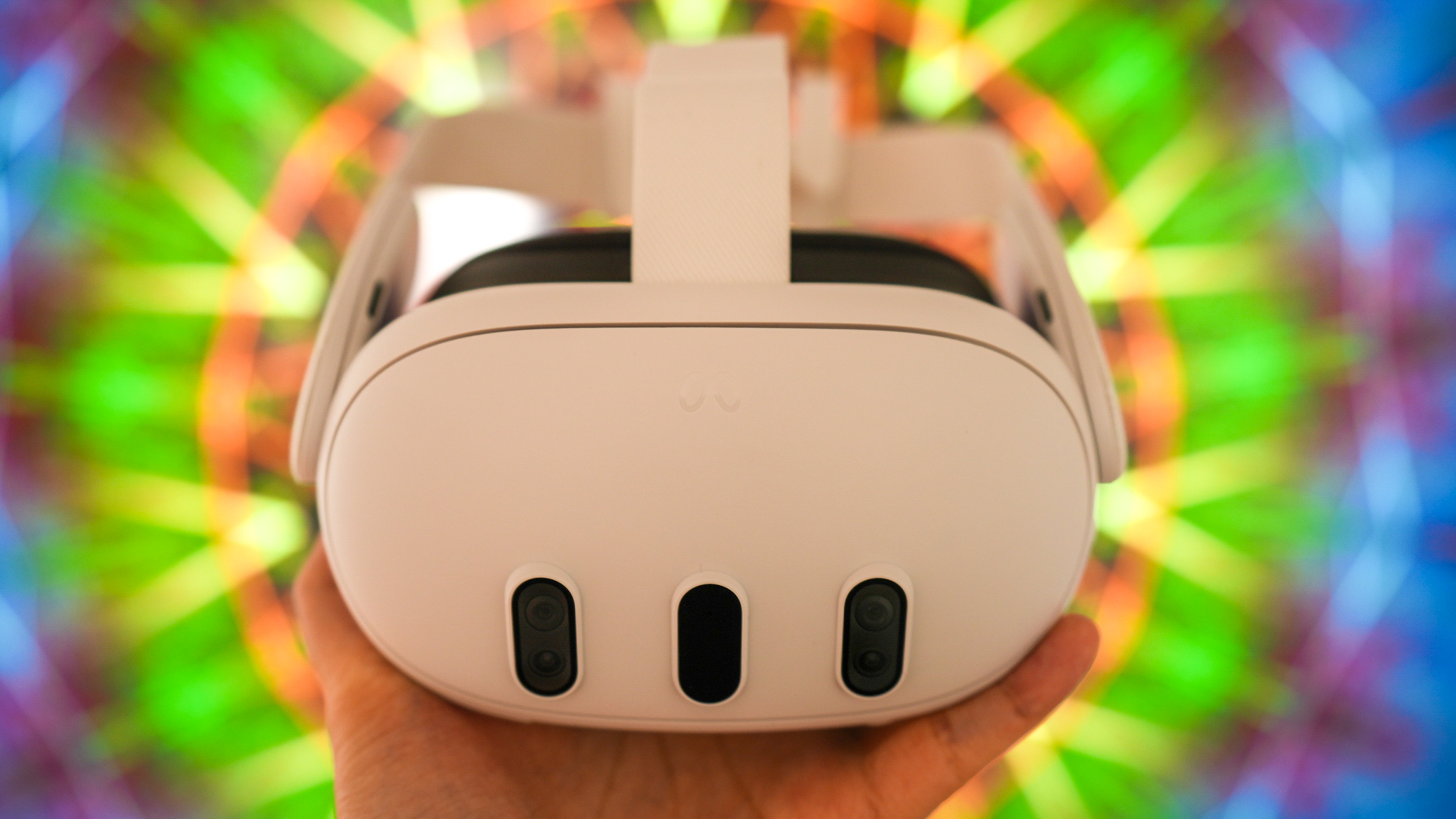
pros and cons
- Detailed imagery with improved passthrough
- More compact and comfortable form factor
- Rich catalog of games and services
- Accessibly priced
- Battery life could be better (still less than 2 hours)
- Needs a killer mixed reality app
- Not the easiest to wear with glasses
more buying choices
As weird as it sounds, it’s hard not to draw comparisons between Meta’s $500 Quest 3 and Apple’s $3,500 Vision Pro headset. The former was teased just days before Apple launched the Vision Pro at WWDC back in June, and Mark Zuckerburg calls the Quest 3 “the first mainstream mixed reality headset”, giving a nod to its more accessible price point and earlier entry into the market.
Also: I demoed the $299 Meta Ray-Ban smart glasses and they’re way better than I expected
While the Quest fulfills just a fraction of the Vision Pro’s capabilities — and at a lesser quality — there’s no denying that for $500, this is the best-value VR experience currently available. Being able to walk in and out of a Best Buy with a performant, all-in-one, mixed-reality headset as soon as today is something you simply won’t be able to do with Apple’s more premium option.
But with Meta continuing to sell the older (and $200 cheaper) Quest 2 model, the big question is who exactly should pay up for the Quest 3? Are the new changes to the design, display quality, and performance worth the upgrade? And, perhaps, should the Vision Pro Faithful even consider Meta’s proposed alternative while Apple works out its kinks? All of those questions, and more, will be answered below.
Specifications
|
Display |
LCD with 2064 x 2208 pixels per eye, 120Hz refresh rate |
|
Weight |
515g |
|
Processor |
Qualcomm Snapdragon XR2 Gen 2 |
|
RAM/Storage |
8GB with 128GB or 512GB |
|
Battery life |
1-2 hours depending on use cases |
|
Tracker/sensors |
Six advanced camera sensors with high-res color mixed reality, two RGB camera with 18ppd |
|
Controllers |
126 grams each, powered by a single AA battery |
|
Price |
Starting at $499 |
How I tested the Meta Quest 3
By the time you’re reading this, I’ve spent a little more than a week with the Meta Quest 3, testing a combination of virtual and mixed reality experiences, including stationary-based titles like Out of Scale and Immersed and more mobile ones such as First Encounters and SEGA’s Samba de Amigo.
Also: I tried Meta’s Quest 3 VR headset and the mixed reality experience was next level
Out of all the experiences I tried during the week’s time, First Encounters, the preinstalled, starter-pack game was the most impressive. But it was just that, a starter game, and I quickly forgot about it when I transitioned to all the other titles that Meta suggested I test the headset with, most of which were based in VR and not MR. That was a bit of a letdown for me, given Meta’s mixed-reality push with the Quest 3.
That said, the company says more games will be released over the coming weeks and months. Two that I’m particularly interested in checking out are Ghostbusters – Rise of the Ghost Lord and Lego Bricktales, both of which appear to truly leverage Quest 3’s mixed-reality capabilities.
The new Touch Plus controllers do away with the sensor ring for a better handheld experience. June Wan/ZDNET
Lastly, I’m a full-time glasses wearer, with a prescription that’s fortunately not too severe to be a cause for concern when using VR headsets and their built-in lens adjustments. While my tester during my pre-Meta Connect briefing barely fit with my glasses on, I found a comfortable sweet spot with my at-home review unit and have been able to use the headset both with and without glasses. Meta is providing me with prescription VR lenses via Zenni Optical to test out, so I’ll update this review with my thoughts when they arrive.
What are the Quest 3’s best features?
Meta’s upgraded this year’s VR headset on virtually all fronts, including external hardware, material choices, and the processor. Here’s the low-down of the best new features and my experience with each:
Slimmer form factor — When I first went hands-on (heads-on?) with the Quest 3, the slimmer form factor was the first thing I noticed. VR headsets, let alone ones that can operate without being tethered to a PC and external sensors, are naturally front-heavy — given all the cameras and sensors required to process your surroundings. While the Quest 3 (515g) is actually heavier than the Quest 2 (503g), the slimmed-down components on the front, including the new pancake lenses, make the headset much easier to balance with the head strap.
Quest 2 (left) versus Quest 3 (right). June Wan/ZDNET
Meta also shrank its Touch Plus controllers, removing the sensor rings that made the previous version clunky and sometimes cumbersome to store. The company says it was able to do this because of the new sensors on the headset (seen above) and some AI/machine-learning enhancements that can better predict your hand and finger movements.
Also: Meta has a secret VR headset that may have a key advantage over Apple’s Vision Pro
Not only are the new controllers much more handy, but the haptics within are also noticeably more realistic. They can still feel like old Nokia phones buzzing when games trigger the most basic vibrations, but in other cases, they feel solid and tactile, giving me reassuring feedback when I tap a virtual button or charge a blaster.
More cameras and sensors — If Meta’s marketing didn’t make it clear to you that the Quest 3 was geared towards mixed reality experiences, perhaps the two new RGB cameras and depth projector will. The new headset is better at reproducing your surroundings in full color and is impressively accurate with measuring how close and far away objects are.
When testing the Quest 3 in my living room, there were several occasions when the MR capabilities made me raise my eyebrows:
- You can now map your guardian area — the space that you designate as “safe to move around with a headset covering your eyes on” — simply by walking around and letting the cameras and sensors do the scaling work. Some effort is still required, and I highly recommend actually walking around objects like sofas and plants and staring up and down so that the headset gives you the most realistic play space, but the fact that you can do this without a controller is another step into a VR/MR future that’s solely operated by your eyes and hands.
- The new introductory game, First Encounters, is like Space Invaders but in mixed reality, with aliens literally breaking through your walls and you needing to shoot them down. Having mapped my whole living room for gameplay, it only took a few seconds of seeing virtual cracks on my ceiling to put a smile on my face. And because the passthrough was accurate enough, I wasn’t afraid to scurry around and didn’t fear bumping into furniture.
- I can actually read and use my phone with the headset on. That’s compared to the Quest 2, which, at best, showed a glowing white rectangle and the occasional infrared light.
That said, the new mixed reality experience is not perfect. There were certainly moments when waving my arms around would distort the passthrough, breaking me from the immersion. And the actual color tone can be more cool-toned than how things look in reality. But it’s still a major improvement nonetheless, and one that many can appreciate at the $500 price point.
Also: The metaverse’s biggest unknown: Where we go from here
Pro-like pancake lenses — And for nearly a third of the price of what the Quest Pro originally sold for, users will be delighted to know that the 4K+ Infinity Display pancake lenses found on Meta’s more expensive VR headset are now present on the Quest 3. That not only expands the field-of-view (FOV) — how much you’re able to see from one corner of the screen to the other — but drastically improves the detail and clarity of text and images. The upgrade was most noticeable when working on my virtual desktop in the Immersed app, with ZDNET’s content creation site requiring less effort than usual to scan and navigate.
The new pancake lenses are much larger than the displays on the Quest 2. June Wan/ZDNET
Qualcomm Snapdragon XR2 Gen 2 — Powering the displays and system in general is a new Qualcomm Snapdragon XR2 Gen 2 platform, which promises 2x faster graphics performance than the Quest 2. Because the Quest 3 is backward compatible, meaning it can run existing games and services from the Quest 2, I spent a good hour comparing the load times across different titles like Beat Saber, Superhot VR, Onward, and more on both headsets.
Also: This expert says VR’s biggest problem is how we’re using it
While the Quest 3 wasn’t necessarily operating at twice the speed, it did render graphics a good 4-5 seconds faster. Of course, you’ll only notice this difference if you compare the two devices side by side. Being the first headset to bring the new Snapdragon processor to market, I wish Meta implemented eye-tracking with the Quest 3, whether it be for navigating the UI or just more realistic interactions when in social apps like Horizon Worlds.
Improved spatial audio — I didn’t think that audio would be one of my favorite aspects of the Quest 3, but that’s certainly the case. The new headset features 3D spatial audio, a surround sound technology that takes virtual and mixed reality experiences to another level. This upgrade was most apparent in my demo of Dungeons of Eternity, when the dungeon master was showing me the ropes in the introduction sequence and I was too busy wandering around, looking at how the textures of the cave were rendered.
Meta Quest 3 vs. Apple Vision Pro
While I’ve yet to try Apple’s Vision Pro headset, I’ve consumed enough first impressions content, including that of ZDNET’s Editor-in-Chief, Jason Hiner, to understand most of its strengths and weaknesses. In many ways, the Quest 3 is very similar to the Vision Pro, as listed below:
- Emphasis on mixed reality and spatial awareness
- Limited two-hour battery life, unless the headset is tethered
- The ability to navigate with only finger taps
- Virtual desktop mode by extension of a MacBook
- Various use cases like gaming, productivity, and social networking
While the Quest 3’s Infinity Display lenses may not be as sharp, the lack of eye tracking means you still have to physically point at where you want to navigate, and the headset only has one processor compared to Apple’s two (M2 and R1 chip), many of the core experiences of the Vision Pro are very much present on the Quest 3.
Also: This ultraportable VR headset gave me a taste of Vision Pro at a fraction of the cost
Why is this important? Because there are still millions of people who haven’t experienced VR/MR, and investing $3,500 in a product, even if it’s made by Apple, is a tough pill to swallow. For first-timers, I’d recommend testing the waters with something more accessible, and Meta’s $500 Quest 3 may be the best place to start.
ZDNET’s buying advice
Ultimately, the Meta Quest 3 is, as Zuckerberg put it, the best “mainstream mixed reality headset” currently available. I say that because 1) the headset finally delivers a high-quality passthrough experience and 2) there’s really no competition at this price point. Sure, the Sony PlayStation VR2 costs the same, but you also have to factor in the $400-$500 PlayStation 5 that powers it.
There’s one thing I wish Meta did differently with the Quest 3. Currently, Meta only offers the Quest 3 in 128GB and 512GB configurations, meaning you’ll either have to settle with just enough memory or possibly more than necessary. My review unit, which has roughly 15 games downloaded, has already consumed 90GB of the 128, so I’m already in the “I like this game, but how big is the file size?” phase of consumption.
If you plan on buying a Quest 3, I’d make a mental note of how much storage your favorite apps and games require in order to make the best buying decision.
Alternative to consider
BEST QUEST 3 ALTERNATIVE
Meta Quest 2
If you can live without the mixed reality and graphical enhancements, the $300 Meta Quest 2 is still a fantastic headset for VR beginners.

